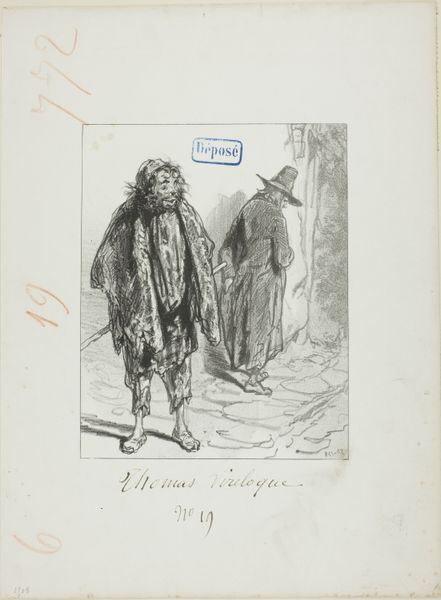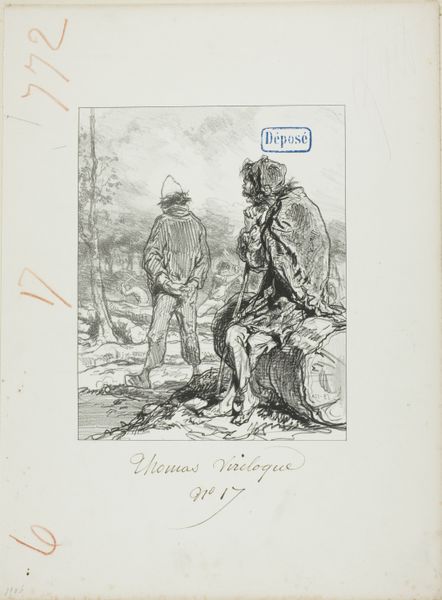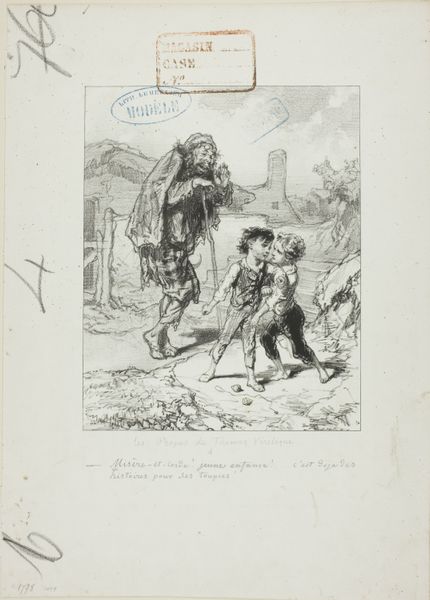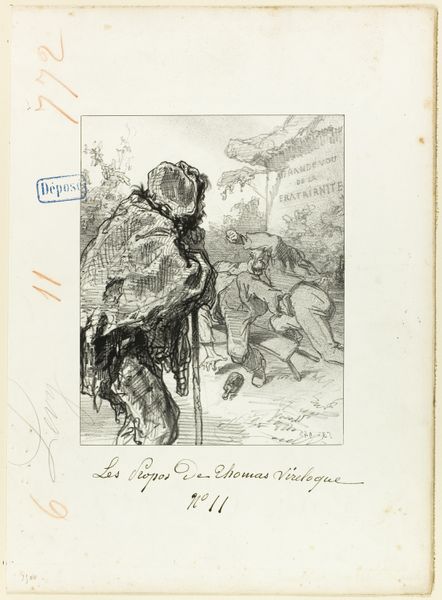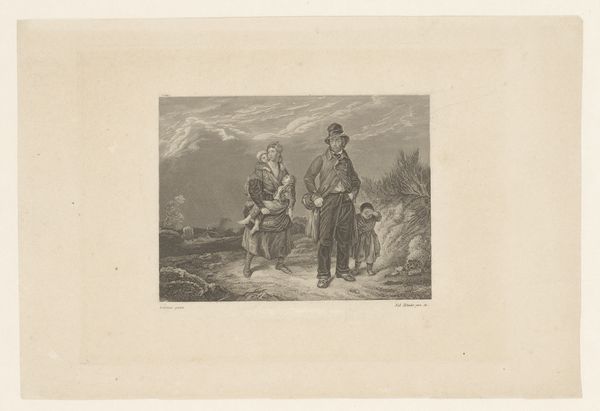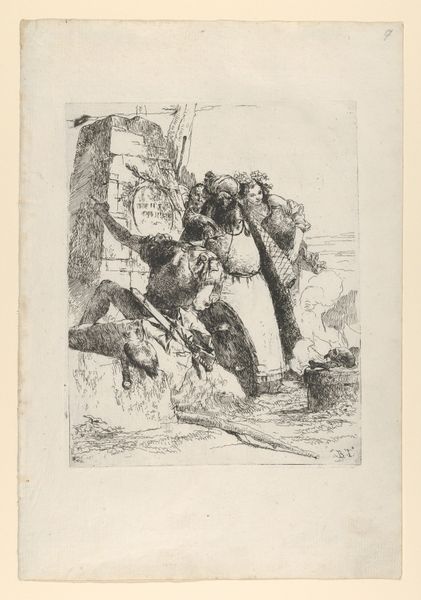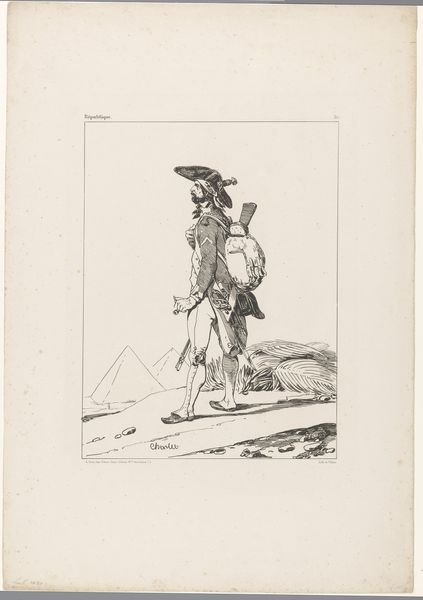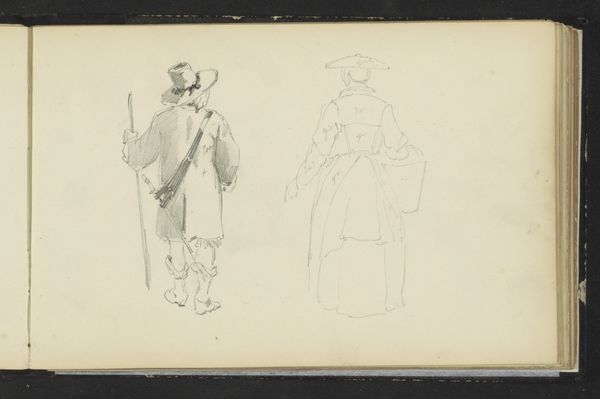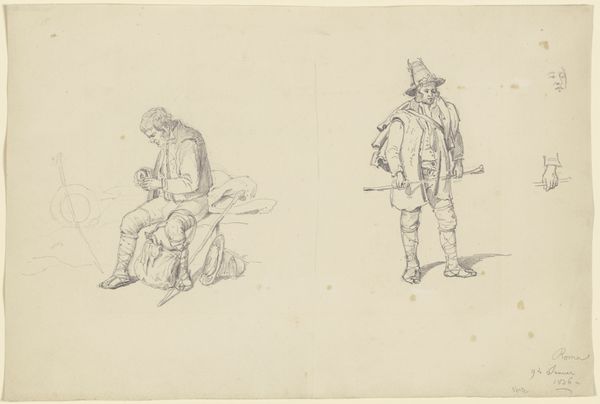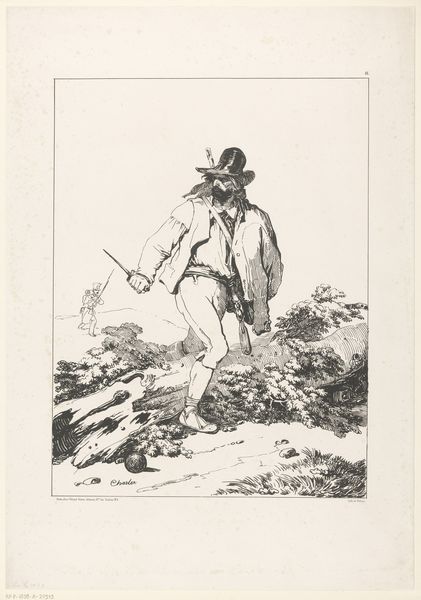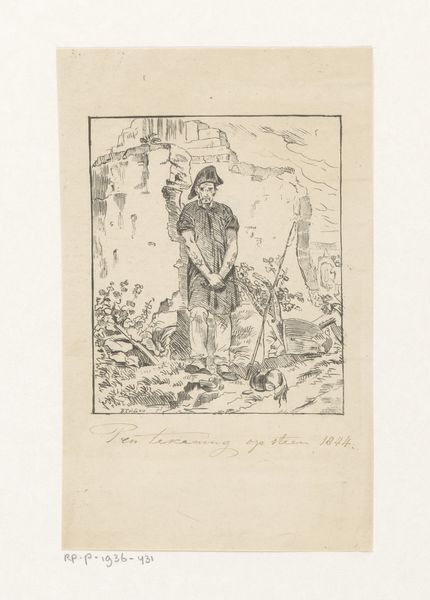
Les Propos de Thomas Vireloque: Matthew has only this in his favor 1853
0:00
0:00
Dimensions: 202 × 162 mm (image); 360 × 263 mm (sheet)
Copyright: Public Domain
Curator: I'm drawn to the almost haunting quality of this lithograph. Made by Paul Gavarni in 1853, it's titled *Les Propos de Thomas Vireloque: Matthew has only this in his favor* and resides here at the Art Institute of Chicago. The figure in the foreground, Vireloque perhaps, is striking. Editor: It's certainly visceral. I'm immediately struck by the palpable sense of poverty conveyed through the figure's tattered clothing. The material condition here, suggested through Gavarni's confident, expressive lines, speaks volumes. Curator: Indeed. The figure of Vireloque is so visually arresting, particularly his face, almost grotesque, rendered with stark lines that capture a particular societal view. The name Vireloque itself, which is slang for someone ruined, hints at the moral decay represented. Notice how this character’s stick looks almost like hewn from the very material he is seemingly constructed out of: earth and wood. It is so rudimentary! Editor: And contrast that roughness with the very refined lines used for the second figure standing further behind. This work is a lithograph. Consider the labour involved in creating it. Transferring the image onto the stone, treating the surface—that precise technical process serves to amplify Gavarni’s pointed social critique of the contrasts within French society. The making is so central to what the artwork expresses. Curator: Absolutely, and I read so many coded references. The presence of the dandy suggests both wealth and detachment, a commentary on the social strata of the period. It feels like he carries with him so many societal burdens despite his elevated class! This print could serve almost as a dark reflection of popular Romantic themes, which glorified poverty in simplistic terms as spiritual freedom. Editor: To push on that romantic thought… Could the artist be interested in how we ‘consume’ imagery itself? After all, a lithograph mass produces imagery in a different way to traditional oil paintings, raising questions of how we perceive wealth versus impoverishment. Curator: Precisely. This work’s cultural memory of its historical era and its romantic undercurrent resonates strongly. In a sense it reminds us of the power in facing society's ignored, confronting comfortable narratives. Editor: Right, the artwork also becomes evidence of its making—we learn how materials, like lithographic stone and ink, collaborate to voice complex stories of work and economic disparities in nineteenth-century Paris. A very powerful image.
Comments
No comments
Be the first to comment and join the conversation on the ultimate creative platform.
